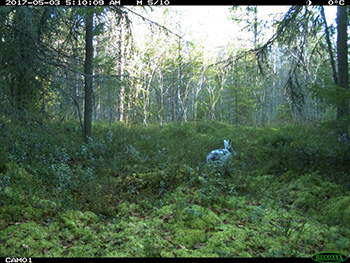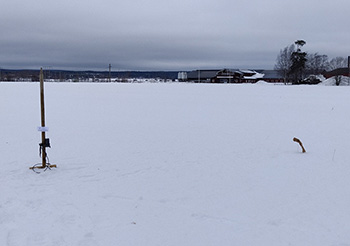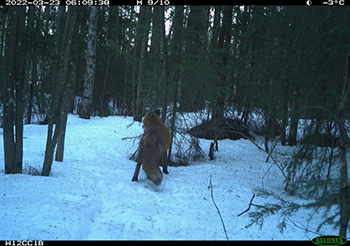Less snow makes white winter coat dangerous
Stoats in the Netherlands and mountain hare in Sweden become white in winter, to be better camouflaged in the snow against predators. Due to climate change, there are less days with snows, meaning that stoats and mountain hare no longer have a good camouflage in winter and are more likely to be detected by predators. Researchers from the University of Groningen and the Swedish University of Agricultural Sciences recently published these findings in the Journal of Experimental Zoology.

Several animal species change their colour annually, they are brown in summer and turn white in winter. This change is regulated by changes in daylight, which is originally linked to snow cover. It is thought that this trait evolved as an adaptation to increase survival changes. However, few studies have experimentally tested whether this snow adaptation actually has an effect on detection by predators.
Decoys
In this new study, the researchers showed experimentally tata a difference in coat colour and environmental colour indeed results in a faster and more often capture by predators. Lead author of the study Pieter J. Otte: “We demonstrated this by placing white and brown decoys (stuffed animals) in front of camera traps with and without snow. In the snow, white decoys were camouflaged, and brown decoys are not, while without snow it is the other way around.”. The research was conducted in forest and open fields outside Umeå in northern Sweden.

The researchers found that the decoys whose colour did not match with the environment were found more often by predators, both in brown in snow cover and white in snow free. In addition, the decoys were found more often and faster in the forest. “We did not expect this,” says Otte, “We thought that prey in the forest would have more cover from predators by vegetation and would therefore be found less quickly than in the open field. This difference may be because predators prefer forests and avoid open fields.”

Problems for the future
“These are very interesting results, because it shows why a white winter coat exists in the first place. Brown animals are more likely to be seen by predators in the snow” says Tim Hofmeester, co-author of the study. “It also shows that species that that have developed a white winter coat may have a problem in the future if the number of snow days decreases due to climate change”.
Reference: Pieter J. Otte, Joris P. G. M. Cromsigt, Christian Smit, Tim R. Hofmeester: Snow cover-related camouflage mismatch increases detection by predators. Journal of Experimental Zoology - A, 21 January 2024
Text: RUG/SLU
More news
-
15 September 2025
Successful visit to the UG by Rector of Institut Teknologi Bandung
